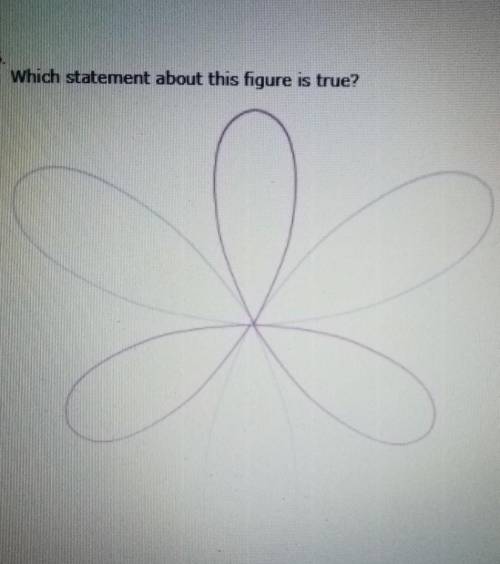
Mathematics, 16.10.2020 05:01 KaleahV
A. It has reflectional symmetry with one line of symmetry.
B. It has rotational symmetry with an angle of rotation of 120°.
C. It has no reflectional symmetry.
D. It has rotational symmetry with an angle of rotation of 60°.
NEED HELP!


Answers: 3


Another question on Mathematics

Mathematics, 21.06.2019 22:00
Select the conic section that represents the equation. 3x2 + 3y2 -2x + 4 = 0
Answers: 2

Mathematics, 21.06.2019 22:30
Adistribution has the five-number summary shown below. what is the third quartile, q3, of this distribution? 22, 34, 41, 55, 62
Answers: 2

Mathematics, 22.06.2019 00:00
What are the interpretations of the line 3x - 15y = 60? x-intercept y-interception a: x 20 - y -4 b: x 5 - y 20 c: x -3 - y 15 d: x -4 - y 20
Answers: 1

Mathematics, 22.06.2019 01:10
Evaluate 8x2 + 9x − 1 2x3 + 3x2 − 2x dx. solution since the degree of the numerator is less than the degree of the denominator, we don't need to divide. we factor the denominator as 2x3 + 3x2 − 2x = x(2x2 + 3x − 2) = x(2x − 1)(x + 2). since the denominator has three distinct linear factors, the partial fraction decomposition of the integrand has the form† 8x2 + 9x − 1 x(2x − 1)(x + 2) = correct: your answer is correct. to determine the values of a, b, and c, we multiply both sides of this equation by the product of the denominators, x(2x − 1)(x + 2), obtaining 8x2 + 9x − 1 = a correct: your answer is correct. (x + 2) + bx(x + 2) + cx(2x − 1).
Answers: 3
You know the right answer?
A. It has reflectional symmetry with one line of symmetry.
B. It has rotational symmetry with an an...
Questions








Physics, 20.12.2019 04:31


History, 20.12.2019 04:31


Mathematics, 20.12.2019 04:31


English, 20.12.2019 04:31


Biology, 20.12.2019 04:31




Arts, 20.12.2019 04:31



